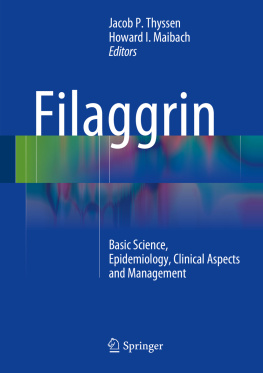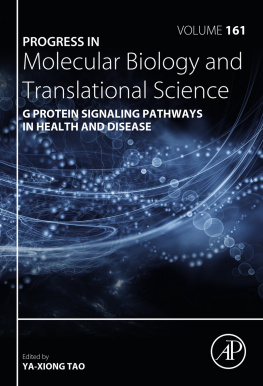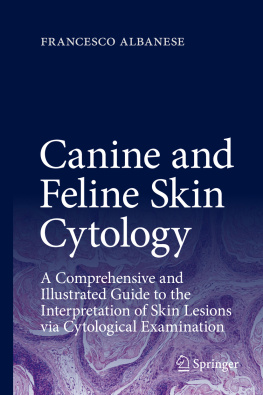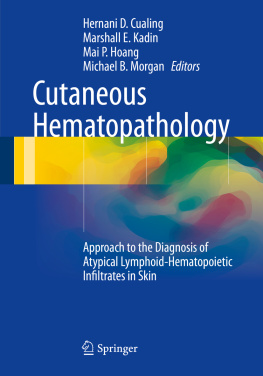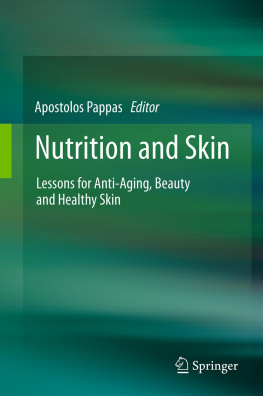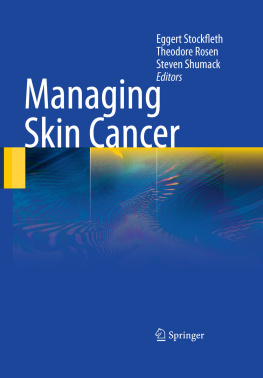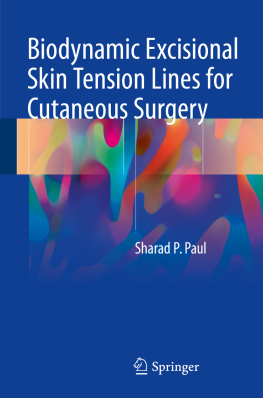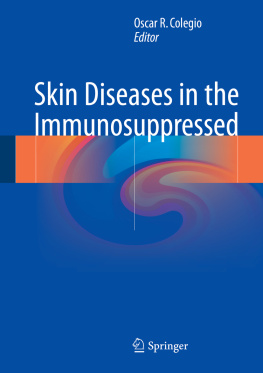Jacob P. Thyssen and Howard I. Maibach (eds.) Filaggrin 2014 Basic Science, Epidemiology, Clinical Aspects and Management 10.1007/978-3-642-54379-1_1
Springer-Verlag Berlin Heidelberg 2014
1. Function of Filaggrin and Its Metabolites
Abstract
Filaggrin is a major structural protein of the stratum corneum (SC), exerting a multitude of biochemical and biophysical functions that are crucial for the composition, structure, and barrier function of the SC. Deficiency of filaggrin has been associated with aberrant network of keratin filaments, disturbed synthesis and organization of the lipids, reduced levels of natural moisturizing factor, and enhanced surface pH. Recent studies identified a number of key biomolecules involved in filaggrin processing providing more insight in the mechanisms by which filaggrin deficiency might lead to skin barrier defect and disease. This chapter will summarize the current knowledge about the function of filaggrin, its precursor pro-filaggrin, and degradation products as well as the consequences of filaggrin deficiency for the skin barrier.
1.1 Background
The skin is a highly specialized, complex, and efficient barrier that prevents loss of water from the body and ingress of exogenous compounds and pathogens into the body. The skin barrier function is primarily conferred by the outermost layer of the epidermis, stratum corneum (SC), in particular by its lipid component. SC is composed of flattened, terminally differentiated keratinocytes (corneocytes), which are embedded in a lipid matrix that creates the highly ordered lipid lamellae. Filaggrin is present in different compartments of the SC. The precursor of filaggrin, pro-filaggrin, is present in the stratum granulosum, whereas filaggrin is expressed in the cornified envelope and within the corneocytes.
A major emphasis for filaggrin has historically been placed on its role in the aggregation of intermediate keratin filaments within the corneocytes, ensuring mechanical integrity of the SC and as a main source of hygroscopic components, comprising the natural moisturizing factors (NMFs) []. The breakthrough discovery of the loss-of-function mutations in the filaggrin gene ( FLG ) and their importance for the development of ichthyosis vulgaris (IV) and atopic dermatitis (AD) initiated a cascade of studies aiming to elucidate the underlying mechanisms and functional consequences of decreased filaggrin expression for the skin barrier and immune aberrations in AD. Novel molecular biology technologies and in vitro and animal models of filaggrin deficiency provided a body of evidence that filaggrin itself, but also its precursor pro-filaggrin, and degradation products interact with relevant structures and biological processes crucial for the homeostasis of the SC. In this chapter, recent knowledge on the main functions of filaggrin will be highlighted, addressing the key players in the processing and degradation of this unique protein as well as discussing their relevance to biological processes crucial for the maintenance of SC homeostasis.
1.2 Pro-Filaggrin and Pro-Filaggrin Processing
Pro-filaggrin is expressed as a giant, highly phosphorylated polyprotein that is present in the keratohyalin granules localized in the outer nucleated layers of the epidermis, the stratum granulosum [].
During terminal differentiation, pro-filaggrin is rapidly dephosphorylated and cleaved to yield functional filaggrin monomers, which bind to and assemble keratin intermediate filaments [].
1.3 Filaggrin and Skin Barrier Function
Filaggrin monomers aggregate and align keratin bundles, contributing to the mechanical strength and integrity of the SC [].
Kawasaki et al. [].
In contrast with animal and in vitro models of filaggrin deficiency, in vivo data on skin permeability in humans are less consistent, although alterations in the structure of various SC components have been reported in several studies. Angelova-Fischer et al. [] reported lower TEWL in AD patients who were FLG mutation carriers as compared to FLG wild-type AD patients.
As breakdown products of filaggrin contribute to the acidic pH of the SC []. To get more insight into the interplay between inflammation, filaggrin expression, and skin barrier function, further investigations in well-defined subgroups of patients and controls are needed.
While most studies focus on the SC and its intercellular lipid layers as a principal barrier of the skin, recent studies emphasize the role of tight junctions (TJs), which play a role in sealing epidermal cell-to-cell integrity. Recent studies have also shown that deficiency of filaggrin influences TJ proteins, suggesting that there is an interplay of SC and TJ barriers [].
1.4 Filaggrin Degradation Products
Filaggrin is a predominant source of free amino acids and their derivatives, contributing more than 50 % to total content of NMF and a complex mixture of hygroscopic compounds that contain filaggrin degradation products as well as chloride and sodium ions, lactate, and urea [].
The most abundant amino acid in filaggrin is histidine, which is further enzymatically deaminated by histidase into trans -urocanic acid ( t-UCA ). T -UCA is a major absorber of UV radiation (UV-R) in the SC. Upon exposure to UV, t -UCA is isomerized into a cis -urocanic acid ( cis -UCA), which has been shown to be (photo)immunosuppressive []. Thus, filaggrin deficiency may at least partly explain frequent colonization with S. aureus in AD patients, although the exact mechanisms still have to be elucidated.
Another important product of filaggrin degradation is pyrrolidone-5-carboxylic acid (PCA), which is derived from glutamine and glutamic acid. PCA is a highly hygroscopic compound and the most abundant single constituent of NMF (contributing for more than 10 %) [].
In vivo studies based on Raman confocal microscopy showed that the carriers of FLG null mutations have reduced NMF levels as compared to noncarriers [], although a relationship between lipid changes and the filaggrin genotype could not be demonstrated. This points to the importance of acquired deficiency of filaggrin on the skin barrier.
Conclusion
In summary, several lines of evidence show that filaggrin, its precursor pro-filaggrin, and degradation products interfere with key processes and structures in the SC. Some of these effects are due to the filaggrin molecule itself (e.g., deficiency of filaggrin affects alignment of keratin bundles). In addition, deficiency of filaggrin leads to a variety of downstream effects that can be ascribed to reduced levels of its degradation products. Filaggrin breakdown products regulate skin hydration and, furthermore, contribute to the acidic pH of the skin, which in turn is crucial for the activity of various SC proteases involved in desquamation and lipid synthesis. A clearer understanding of the mechanisms by which filaggrin deficiency leads to skin barrier failure can help in identifying environmental risk factors for AD and improve therapeutic possibilities in combating this common inflammatory disease.
References
Harding CR, Aho S, Bosko CA. Filaggrin-revised. Int J Cosmet Sci. 2013;35(5):41223.
Sandilands A, Sutherland C, Irvine AD, McLean WH. Filaggrin in the frontline: role in skin barrier function and disease. J Cell Sci. 2009;122(Pt 9):128594. PubMedCentral PubMed CrossRef

